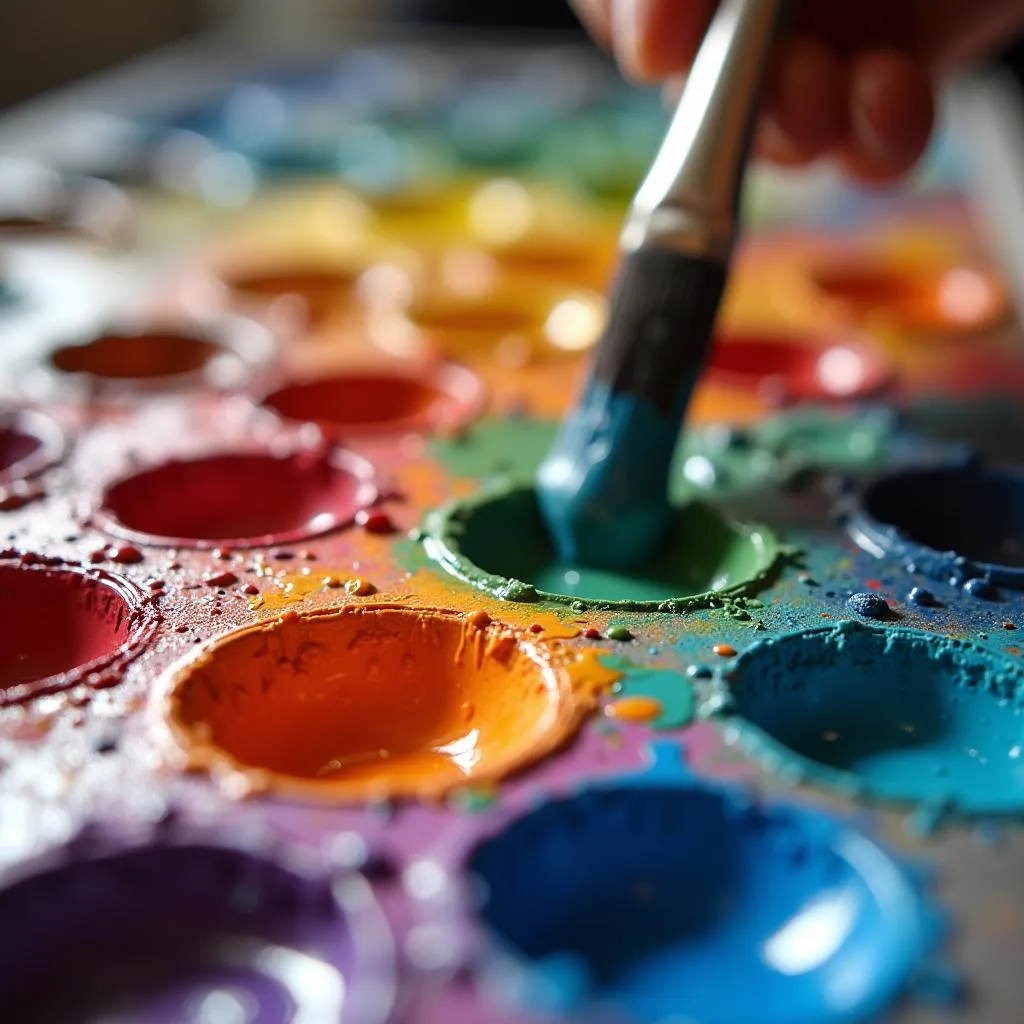The question “is the color black all colors combined?” often arises when we delve into the fascinating world of light and pigments. It seems counterintuitive, yet intriguing, to think that a color associated with absence could be a culmination of every other hue. Let’s explore the science and perception behind this common query.
Understanding Light and Pigments
To unravel the mystery of black, we need to differentiate between additive and subtractive color mixing:
-
Additive Color Mixing: This principle governs how light behaves. When we combine different wavelengths of light, they add up to create new colors. Our eyes perceive the full spectrum of colors when red, green, and blue light—the primary colors of light—are combined at their highest intensities, resulting in white light. The absence of any light wavelengths results in black.
-
Subtractive Color Mixing: This principle applies to pigments, like those found in paints, inks, and dyes. These pigments absorb specific wavelengths of light and reflect others, which our eyes then perceive as color. When we mix pigments, we’re essentially subtracting wavelengths of light. Theoretically, mixing all primary pigments (cyan, magenta, yellow) should result in black because they absorb most of the light spectrum. However, in reality, this mixing often creates a muddy brown due to pigment impurities.
 Mixing Paint Colors
Mixing Paint Colors
Black in Art and Design
While scientifically, black might represent the absence of light, its role in art and design is anything but empty. Black is often used to create:
-
Contrast: Black provides a powerful contrast against other colors, making them appear more vibrant. Think of a bold red flower against a dark background—the red seems to pop even more.
-
Depth and Dimension: In paintings and drawings, black can create shadows and depth, giving objects a three-dimensional appearance.
-
Elegance and Sophistication: Black is often associated with sophistication, elegance, and timelessness. It’s a popular choice for formal wear, luxury cars, and high-end design.
 Black Dress on a Fashion Runway
Black Dress on a Fashion Runway
So, Is Black Really All Colors Combined?
The answer depends on your perspective:
From a scientific standpoint, when dealing with light, black is the absence of color. It’s the result of no light wavelengths reaching our eyes.
In the world of pigments, while theoretically mixing all colors should yield black, practical limitations often result in dark brown hues.
Artistically and perceptually, black holds a powerful presence, representing contrast, depth, and elegance—qualities that make it a crucial element in the world of color.
Frequently Asked Questions
1. Why does mixing all the colors of paint not create a true black?
This is primarily due to impurities in pigments. Ideally, mixing cyan, magenta, and yellow should absorb all light wavelengths. However, most pigments contain impurities that prevent complete absorption, resulting in a muddy brown color instead of pure black.
2. What is the difference between black and grey?
Both black and grey belong to the achromatic color family, meaning they lack hue. The key difference lies in their value, which refers to the lightness or darkness of a color. Black is the darkest value, representing the absence of light, while grey falls between white and black, representing varying degrees of lightness.
Need Help with Your Next Color Project?
Choosing the right colors for your home or creative project can feel overwhelming. If you’re looking for expert advice and guidance, don’t hesitate to reach out!
Contact Us:
Phone Number: 0373298888
Email: [email protected]
Address: 86 Cầu Giấy, Hà Nội
Our team is available 24/7 to answer your questions and provide personalized recommendations. Let’s bring your vision to life with the power of color!

